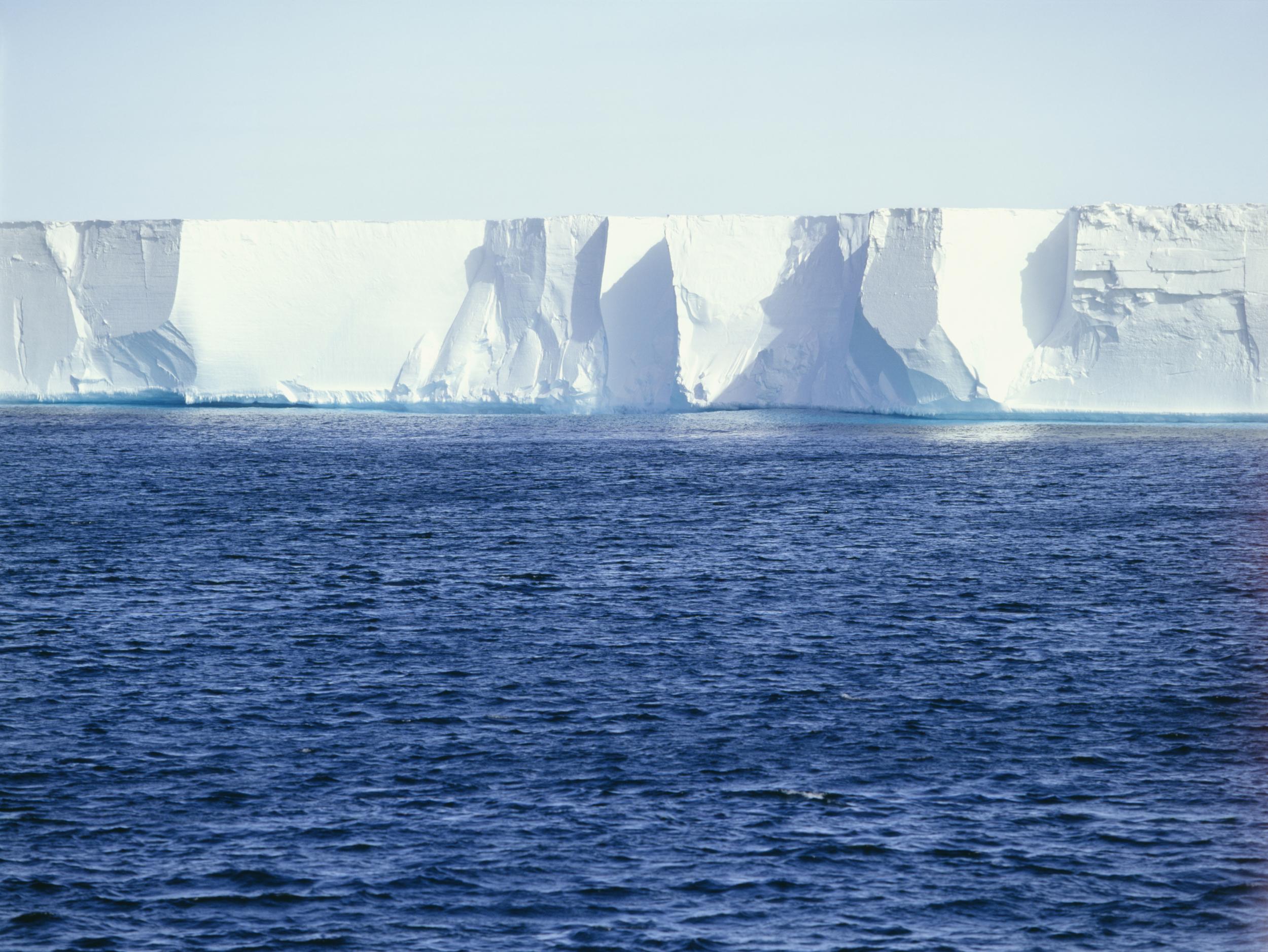World’s largest ice shelf melting 10 times faster than expected as waters heat up
Research reveals growing impact of solar heating of Antarctic Ocean

Your support helps us to tell the story
From reproductive rights to climate change to Big Tech, The Independent is on the ground when the story is developing. Whether it's investigating the financials of Elon Musk's pro-Trump PAC or producing our latest documentary, 'The A Word', which shines a light on the American women fighting for reproductive rights, we know how important it is to parse out the facts from the messaging.
At such a critical moment in US history, we need reporters on the ground. Your donation allows us to keep sending journalists to speak to both sides of the story.
The Independent is trusted by Americans across the entire political spectrum. And unlike many other quality news outlets, we choose not to lock Americans out of our reporting and analysis with paywalls. We believe quality journalism should be available to everyone, paid for by those who can afford it.
Your support makes all the difference.The world’s largest ice shelf is melting 10 times faster than expected due to solar heating of the surrounding Antarctic Ocean, scientists have warned.
The Ross Ice Shelf covers an area roughly the size of France and is several hundred metres thick, with 90 per cent of the ice below sea level.
A study by an international team of scientists, carried out over four years, collected data on how the northwest portion of the ice shelf interacts with the ocean beneath it.
It found the ice is melting much more rapidly than previously thought, due to inflowing warm water.
“The stability of ice shelves is generally thought to be related to their exposure to warm deep ocean water, but we’ve found that solar heated surface water also plays a crucial role in melting ice shelves,” said the study’s lead author, Dr Craig Stewart from the National Institute of Water and Atmospheric Research (NIWA) in New Zealand, and who conducted the work while a PhD student at the University of Cambridge in the UK.
The interactions occurring between the ice and the ocean hundreds of metres below the surface of ice shelves have a direct impact on long-term sea level.
The Ross Ice Shelf is a vital natural barrier providing stability to the West Antarctic Ice Sheet by blocking the ice which flows into it from some of the world’s largest glaciers.
“Previous studies have shown that when ice shelves collapse, the feeding glaciers can speed up by a factor or two or three,” said co-author Dr Poul Christoffersen from Cambridge’s Scott Polar Research Institute.
“The difference here is the sheer size of the Ross Ice Shelf, which is over one hundred times larger than the ice shelves we’ve already seen disappear.”
If the entire West Antarctic Ice Sheet were to melt, it has been estimated the huge volume of water released would contribute 4.8m (16ft) to global sea levels.
The team collected the data from an oceanographic mooring installed under the Ross Ice Shelf by team members from NIWA.
Using instruments put down through a 260m-deep borehole, the team measured temperature, salinity, melt rates and ocean currents in the cavity under the ice.
The instruments on the mooring showed solar-heated surface water flows into the cavity under the ice shelf near Ross Island, causing melt rates to nearly triple during the summer months.
Directly in front of the ice shelf is open water. The area, known as the Ross Sea Polynya, absorbs solar heat quickly in summer and this warmer water is influencing melting in the ice shelf cavity, the scientists said.
The findings indicate conditions in the ice shelf cavity are more closely related to the surface ocean and atmosphere than previously assumed. This also implies that melt rates near the ice front will respond quickly to changes in the uppermost layer of warmer water in the ocean.
“Climate change is likely to result in less sea ice and higher surface ocean temperatures in the Ross Sea, suggesting that melt rates in this region will increase in the future,” said Dr Stewart.
Dr Christoffersen added: “The observations we made at the front of the ice shelf have direct implications for many large glaciers that flow into the ice shelf, some as far as 900km away.”
Join our commenting forum
Join thought-provoking conversations, follow other Independent readers and see their replies
Comments